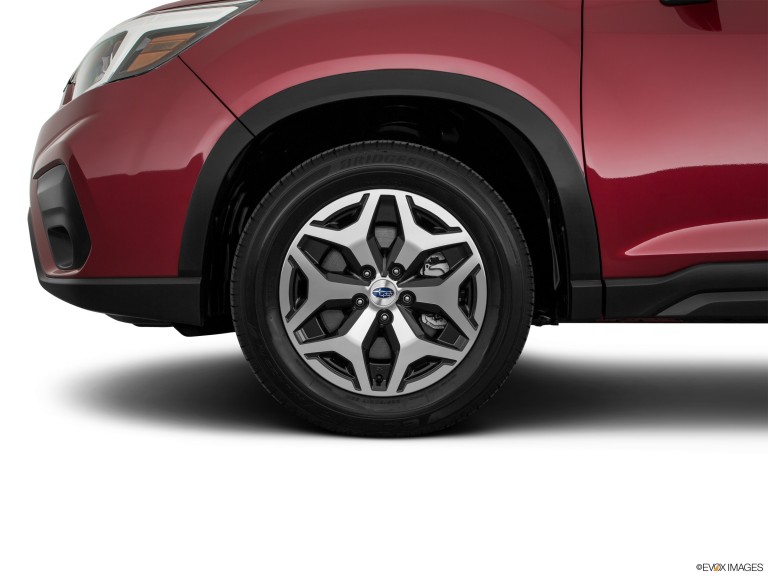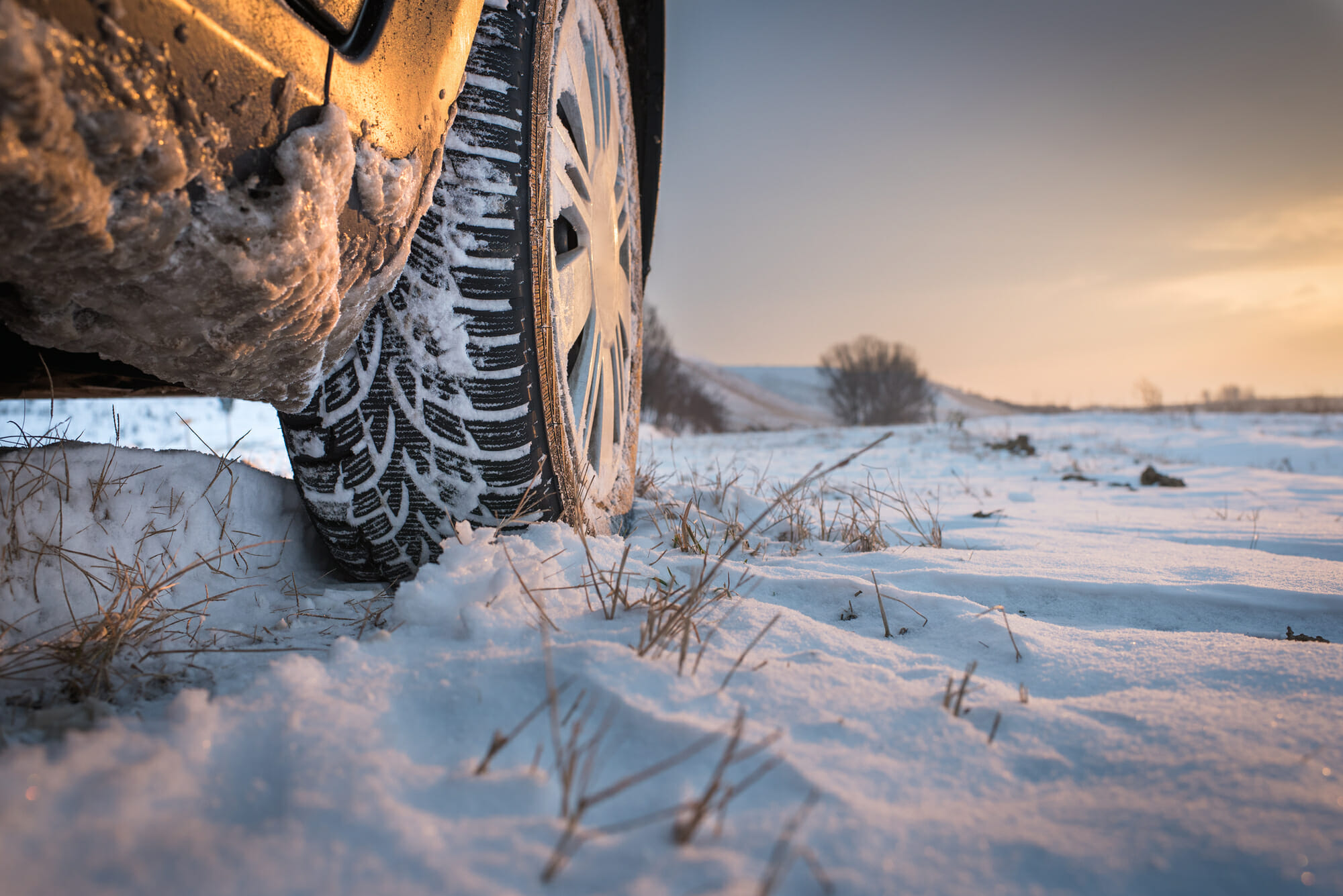The sporty feel and roomy interior make the Subaru Forester the type of car that’s easy to drive and love. You may find this compact SUV is also a solid performer for ride quality. The Subaru Forester best tires make all of the difference when you buy them.
What are the best tires for the Subaru Forester?
- Touring: Michelin Crossclimate+ – $188.10/tire
- Performance: Firestone Firehawk AS – $124.79/tire
- All-Terrain: Continental Terraincontact A/T – $164.99/tire
- Winter/Snow: Continental Vikingcontact 7 – $135.99/tire
Maintaining your Subaru Forester is a priority. The right tires do not have to be hard to find, but making the best decision about features makes a big difference. It’s important not to just consider the base tire as there are options that could improve performance.
Best Tires for the 2020 Subaru Forester

Finding the Subaru Forester best tires for your needs means comparing not only brand names but also types of tires. These are designed to create specific features and performance. Here’s a look at the recommended options for your Subaru Forester.
Touring – $188.10/Tire
Touring tires are a common option (though a more pricy one) for the Subaru Forester. The key here is that these tires improve overall performance. They deliver a far more comfortable ride than your standard tire, especially in the Forester.
You may find that touring tires are more for performance than they are for traction or long life, though. You’ll spend more because you get the sporty feel and the better overall handling these tires can offer. They are a good option for high speeds as well.
When comparing touring tires to others, recognize that they tend to be less ideal in some weather conditions but an overall good option for all-season use. You get decent overall protection from wet and dry conditions, but they are not always the best for snow.
Customers who buy touring tires often say they are durable and long-lasting. Some also state the tires are designed to look good, though some say the price does not do much to improve performance overall.
Performance – $124.79/Tire
Performance tires are another good option for the Subaru Forester. They typically have a larger circumferential and lateral groove on them. This design is important because it ensures the tires perform well in wet conditions, though snow is questionable.
You may also find these have better speed ratings than your typical touring tire. They also are good for grip, such as on uneven surfaces like gravel or dirt. They are also a more affordable option than touring tires (and more practical if we say so ourselves).
For most drivers of the Subaru Forester, this is a solid option because it performs well. However, a word of caution. Quality ranges widely from one brand to the next. You need to ensure the tires you purchase have a silica-enriched tread to improve grip and performance.
For reviews, customers mostly like these tires. They like the better performance in wet conditions and the ability to count on these tires at higher speeds. They do note there is a lot of room in pricing, though, which means quality ranges.
All-Terrain – $164.99/Tire
The Subaru Forester is an SUV, which means it can benefit from the all-terrain tires on the market. These tires are designed to look more aggressive, but they are also better at gripping the surface of the ground. They can improve your ride by smoothing it out.
All-terrain tires are built to last. That is why they tend to last longer than other types of tires on the market (even when you are driving them on the highway or off-roading). You may find these tires are also surprisingly quiet and do well on normal pavement as well.
Good stability on the highway, outstanding on-road performance, and lots of fun if you do get to play in the dirt make these tires a good option for some Subaru Forester drivers. That’s especially true if you are using your Subaru for a work truck or pulling something.
The all-terrain tires on the market range widely in quality. Some report little to no improvement in driving conditions. Others note these tires give them more confidence in quick turns and wet conditions in their Subaru Forester.
Winter/Snow – $135.99/Tire
Yet another recommendation for the Subaru Forester are winter or snow tires. If you operate your vehicle in wet climates, especially when there is compacted snow to manage, these tires can get through it and get you home safely.

They do this because they have a more aggressive treading pattern on them. There are bigger treads and larger gaps between them, creating more surface area to hit the pavement. You may also like that these tires are exceptional for pushing snow and slush out of the way.
Winter tires are a good investment if you live in areas where there are harsh conditions. You may also find them a solid option if you deal with freezing temperatures on a regular basis.
Overall, consumers who buy snow tires like them because they can get through the snowbanks and drifts well. They are also a good option for adding more weight to the Subaru Forester to help with crunching through ice.
People Also Ask
When you have questions about the Subaru Forester’s best tires, be sure to ask our team. Here are some questions others have asked about these tires.
Does the 2020 Subaru Forester come with a spare tire?
Yes, all models of the Subaru Forester come with a spare tire. To find it, you’ll need to access the cargo area of the SUV. Move the carpeting located there and pull on the tab to open up the compartment. The tire is bolted into place and comes with the tools you need.
Keep in mind, you should only drive on a Subaru Forester spare tire for a short amount of time as it is smaller. You’ll also have to know how to change the tire on a Subaru Forester.
What’s the recommended tire pressure for a 2020 Subaru Forester?
This depends on the tire size. The Forester has two tire size options:
- 225/55R18 98H: 35 psi on the front tire and 33 psi on the back tire
- 225/60R17 99H: 33 psi on the front tire and 32 psi on the back tire
How do you reset the tire pressure indicator on a 2020 Subaru Forester?
You can do this on the dash using the control keys on the steering wheel (to move the cursor). After filling the tires to the proper tire repressure, turn the car to the “on” position. Don’t turn on the ignition.
Use the menu to scroll to the “Set” icon. Then, hold this button in place on the steering wheel. This will display the “Tires” item. Scroll through to find the reset tire pressure icon. Hold it down. You may have to drive the car for a few miles for it to go away.